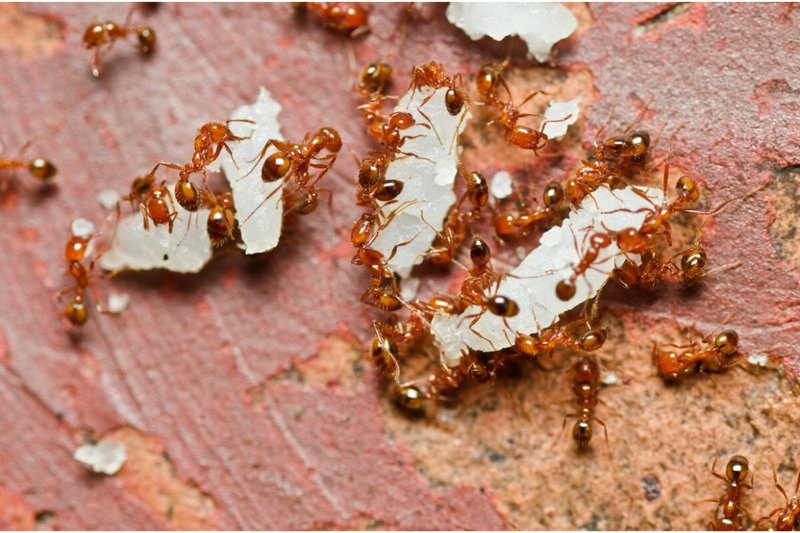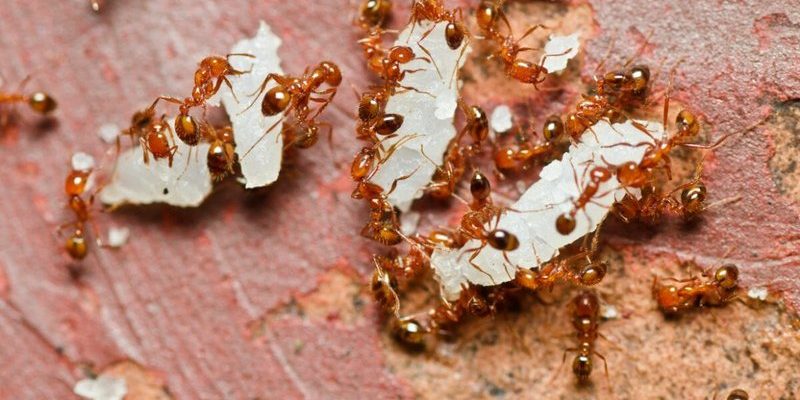
Fire ants are not just annoying little pests; they can be quite aggressive if threatened. You might imagine them like tiny soldiers, protecting their home fiercely. They’re especially prevalent in the southern United States and can be found in various environments—lawns, gardens, and even sidewalks. With their painful sting and the potential for allergic reactions, understanding the danger they pose to humans is crucial. Let’s break it down further, shall we?
What Are Fire Ants?
Fire ants belong to the genus *Solenopsis*, and they are known for their shiny red or brown bodies. They often build large mounds in sunny areas, which can be quite a sight. If you ever see a mound, it’s best to steer clear, as fire ants can swarm quickly if they feel threatened.
These ants are social insects, meaning they live in colonies with a structured system. Each colony can have thousands of workers, numerous queens, and even distinct castes. In their quest for food and resources, they can be quite formidable, especially when they decide to defend their hive. Their sting contains venom, which is what makes them dangerous—let’s talk about that next.
The Painful Sting of Fire Ants
You might be wondering what makes a fire ant sting so painful. Well, it’s all about the venom. When a fire ant stings, it injects venom containing alkaloids, which can cause a burning sensation. This is where they get their name. The sting can feel like a match being lit on your skin—hence the “fire” in fire ant!
For most people, a sting results in a red, itchy bump that may swell up. However, for some, the reaction can be much more severe. Here’s what to expect:
- Local Pain: The sting can be intensely painful, lasting anywhere from a few hours to days.
- Allergic Reactions: Some people may experience more severe allergic reactions, ranging from hives to anaphylaxis.
- Infection: Scratching the sting site can lead to infections, so it’s best to avoid it.
If you’re stung, it’s important to clean the area gently and apply ice to reduce swelling. Over-the-counter pain relievers can also help.
What Happens After a Sting?
So, what happens after you get stung? The immediate reaction is usually a sharp pain followed by itching and swelling. Most people recover in a few days, but for anyone allergic, the symptoms can escalate quickly.
Here’s a quick rundown of potential reactions:
1. Normal Reaction: You’ll feel pain, redness, and swelling at the sting site.
2. Moderate Reaction: You might experience swelling that spreads beyond the sting site, blistering, or severe itching.
3. Severe Reaction: This could lead to anaphylactic shock, which is a medical emergency. Symptoms include trouble breathing, swelling of the face or throat, and rapid heartbeat.
It’s crucial for anyone known to have severe allergic reactions to carry an epinephrine auto-injector, just in case.
Are Fire Ants Aggressive?
Honestly, you might be surprised by just how aggressive fire ants can be. They don’t just sting once; they can bite and sting multiple times in quick succession, which is like hitting the panic button for their friends in the colony.
Their aggression is often defensive. If they sense danger—like a human walking too close to their mound—they’ll swarm. This is why it’s essential to be cautious around their nests. Here are some tips to avoid provoking them:
- Stay aware: Look for fire ant mounds while outdoors, especially in warmer months.
- Wear shoes: When walking through grassy areas, keep your feet protected.
- Use caution: If you accidentally disturb a mound, back away slowly and calmly.
By respecting their space, you can often avoid a painful encounter.
How to Treat Fire Ant Stings
If you do get stung, it’s essential to know how to treat the sting properly. Here’s a simple guide:
1. Clean the Area: Use soap and water to wash the sting site thoroughly.
2. Apply Ice: Wrap ice in a cloth and apply it to the sting for 10–15 minutes to reduce swelling and pain.
3. Use Over-the-Counter Medications: Antihistamines, like Benadryl, can help with itching, while pain relievers like ibuprofen can alleviate pain.
4. Monitor Your Symptoms: Keep an eye on your reaction. If you notice any signs of a severe allergic reaction, seek medical help right away.
Knowing how to care for fire ant stings can make all the difference in your comfort level after an encounter.
Preventing Fire Ant Encounters
Prevention is key when it comes to fire ants. While it’s nearly impossible to avoid them entirely, there are steps you can take to minimize your risk.
Here are some proactive measures:
- Keep Your Yard Clean: Clear away debris and garbage, as these can attract fire ants.
- Control Yard Weeds: Maintaining your yard’s vegetation can deter fire ant colonies from moving in.
- Professional Pest Control: If fire ants are a persistent problem, consider hiring a pest control service to manage them effectively.
Being vigilant and proactive can help you enjoy the outdoors without the worry of fire ant encounters.
Fire ants might be small, but they can definitely be dangerous to humans. Their painful sting and potential for allergic reactions make it essential to understand the risks. By being aware, taking precautions, and knowing how to treat stings, you can enjoy your time outdoors with confidence. Remember, fire ants are aggressive protectors of their territory, so give them the respect they deserve. Stay safe, and let your adventures in nature continue, free from the worry of these fiery little foes!

